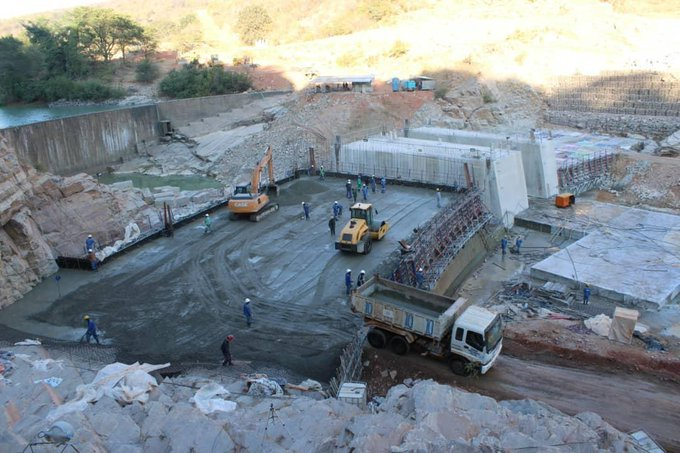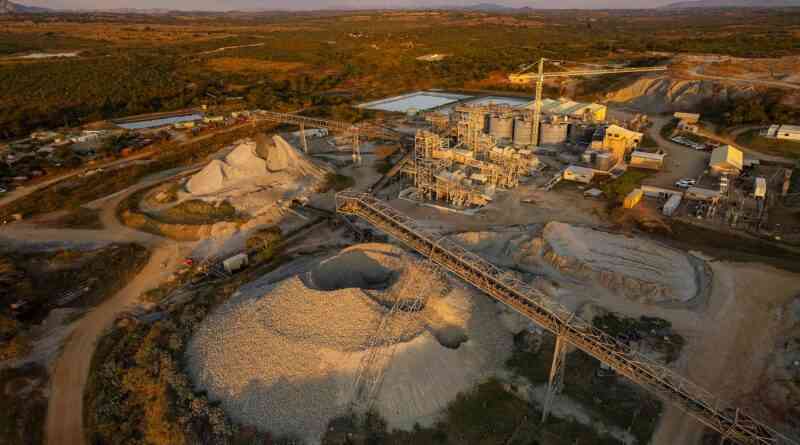
BY SILAS NKALA
“From the budget presented in December, we allocated some money so that construction begins. I have promised traditional leaders that I will make sure that more money is released so that the construction is completed next year,” President Emmerson Mnangagwa said in March 2018.
Mnangagwa made the remarks at Nabashome Primary School in Hwange, Matabeleland North province, after touring the Gwayi-Shangani Dam site.
The project had been allocated $23,3 million in the 2018 national budget to fast-track the project.
But Mnangagwa missed the 2019 deadline.
According to the Zimbabwe National Water Authority (Zinwa), the Gwayi- Shangani Dam project is currently 59% complete, with the deadline now pushed to December 2022.
The project is seen as the long lasting solution to Bulawayo’s perennial water woes.
Year 2020 and 2021 have been the worst in recent years, with Bulawayo residents going for weeks on end with dry taps, resulting in an outbreak of waterborne diseases.
- Chamisa under fire over US$120K donation
- Mavhunga puts DeMbare into Chibuku quarterfinals
- Pension funds bet on Cabora Bassa oilfields
- Councils defy govt fire tender directive
Keep Reading
In 2020, a diarrhoea outbreak claimed 13 lives in the city’s Luveve suburb after residents drank contaminated water.
Over 1 000 others were also infected.
Recently, a Tshabalala resident succumbed to diarrhoea that hit the suburb after Bulawayo City Council (BCC) introduced a 72-hour water-shedding regime.
In 2021 and as in previous years, the Gwayi-Shangani Dam grabbed the headlines again as government officials made numerous site visits while also promising to speed up its completion ahead of the 2022 deadline.
Not a single month passed without mention of the project in the media.
As recently as December 3, Mnangagwa said December 2022 would mark the day Bulawayo says “good bye” to the perennial water problems after officiating at a clean-up campaign in the city.
He said government had engaged six local companies to start construction of a 245km pipeline that will be used to ferry water from the dam to Bulawayo.
“We are building our country brick by brick, stone upon stone. Bulawayo historically has always had the problem of water. So my government has resolved that this issue must be resolved once and for all. We are also recruiting local companies to dig trenches from Gwayi to Bulawayo,” Mnangagwa had said.
“We will put a pipeline from Gwayi to Bulawayo. So next year this time here in Bulawayo, whoever will be complaining of water will be lying, because it will be all over.”
Government officials have said an integrated master plan for the greenbelt economy along the pipeline is on the cards. About $535 million has been allocated towards the commencement of the pipeline construction phase.
On December 8, Zinwa revealed that government was yet to contract companies for the pipeline, casting doubt on plans to meet the 2022 deadline.
“The tender process is still on-going and we will update when complete. The tender closing date was November 24 and it will be finalised at the end of year or early January,” Zinwa spokesperson Marjorie Munyonga told the media.
A tender for the construction of the pipeline was floated in April following a ground-breaking ceremony by Mnangagwa and it is only open to local companies.
Upon completion, the dam will have a capacity of 635 million cubic meters of water, making it the third biggest in-land dam in the country after Tugwi-Mukosi and Mutirikwi.
About 160 million cubic meters will supply Bulawayo, and the remainder for irrigation projects along the pipeline.
The project to pipe water from the mighty Zambezi River, 452km away to Bulawayo, was first mooted in 1912, but abandoned by successive governments due to the high costs involved.
There have been successive budget allocations from the Treasury towards the project, with timelines set for its conclusion, but the project remains in its initial stages of implementation.
While the project is set to bring relief to Bulawayo and parts of Matabeleland North in terms of water supply, reports are that not everyone is celebrating.
Binga-Lubimbi villagers are crying foul that the project would lead to their displacement from their ancestral homes. About 2 422 people will be relocated to pave way for the construction of the giant water body.
Recently, Zinwa assured villagers that the dam bottom outlets would be closed to prevent risk of flooding.
“Zinwa conducted data capture exercises after marking the dams high flood level in 2018. The exercise identified the people and infrastructure such as power lines and roads that were within the high flood level zone and needed to be relocated,” Munyonga said.
“The information was forwarded to the ministries of Lands, Agriculture, Fisheries, Water and Rural Development, and Local Government, which are the relevant ministries for the relocation of affected people.
“The two ministries have since deployed their teams, which are on the ground evaluating the number of homesteads, roads, power lines, schools and other properties that fall within the high flood level in preparation for the relocation and the rerouting of roads and power lines.”
Munyonga added: “The dam is, however, not expected to start impounding water this season and has two openings at the bottom, each measuring 5m wide x 8m high to let the floods pass through the dam, hence there is no risk of people being flooded should the rainy season start.”
Government has said it has carried out an assessment on the value of the property to be affected by the expansion of the Gwayi-Shangani Dam in Lubimbi to compensate the evictees in United States dollars.
Binga district development co-ordinator Farai Marinyame said government had crafted a mitigation strategy for the villagers.
“The government is on course. We crafted the provincial mitigation strategy,” he said.
But critics and Bulawayo residents doubt government’s sincerity to ensure completion of the project.
To many, any mention of the project is but a tale of broken promises.
- Follow Silas on Twitter @silasnkala










